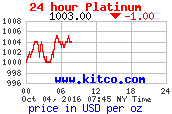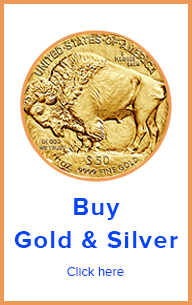What is a Silver Dollar
Value of a Silver Dollar
Silver Dollar Definition
A U.S. Silver Dollar is the monetary unit of the United States as defined by congress in the 1792 Coinage Act. In this legislation, a U.S. Dollar is defined as 372 grains plus 4/16 of a grain of pure silver. Thus the pure silver content of a silver dollar is 372.5 grains of silver.
Silver Dollar Composition
Silver is a very soft metal. By itself, silver is not fit for daily circulation. In order for silver to be used in trade every day, it had to be hardened. To accomplish this, a copper was added to create an alloy with a fine content of 372.5 grains of silver. The composition of this alloy, is 90% silver and 10% copper. Thus, a silver dollar has a total mass of silver and copper alloy of 413.88 grains.
Silver Dollar Background
The U.S. congress did not invent from scratch the U.S. Silver Dollar. The U.S. Silver dollar was modeled after the Spanish Dollar. This was done because at the time, the Spanish Dollar was basically the world currency due to its exacting specifications. A Spanish Dollar was always the of same dimensions, weight, minting and silver fine content, which was 90%. Thus, this coin was to be trusted. Thus, buy modelling the U.S. Silver Dollar after the Spanish Silver Dollar, the U.S. Silver Dollar inherited that “trust-ability”.
Success of the Silver Dollar
The most important factor for a form of money to succeed is to be “trust-able”. A currency is as successful as its ability to transfer value. This entirely depends on trust. By the U.S. Silver dollar being modeled after the Spanish Silver Dollar, and by strictly maintaining the dimensional and fine silver content, the U.S. Silver Dollar earned the awesome reputation it deserved.
The Spanish name of the Spanish Silver Dollar is “Real de a Ocho”, or “Peso de Ocho”. The word “och0” means “eight” (number “8”). Fractions of the Spanish Dollar were based on 1/8ths. Whereas the fractions of the U.S. Dollar are based on 1/100th. Thus, on cent (centecimal) is 1/100th of a Dollar.
The good reputation of the U.S. Silver Dollar is based on the fact that everyone holding a U.S. Silver Dollar is actually holding 372.5 grains of silver. So either way, by holding a U.S. Silver Dollar, or a Spanish Dollar, the bearer is still holding 372.5 grains of silver. An that is what matters. Most South American countries also followed this standard. Thus, because it was all based on silver, the wealth of the bearer of the coins was not based on the country origin of the coinage, but on the amount of fine silver owned.
The Origin of the Name “Dollar”
The word “Dollar” is a transliteration of the word “Thaler”. It could be said, that by passing from language to language, the word “Thaler”, of Germanic origin, became the English language word “Dollar”. Both words still sound similar.
The “Thaler” coin is the predecessor to the Spanish Dollar. The Thaler originated in 1741, with a fine silver content of 83%. Its success is also based on the fact that it is a “trust-able” coin. Learn more.
Silver as Commodity Money
Being actually made of silver, which is a commodity, U.S. Silver Dollars are a form of commodity money. Commodity money is money whose value comes from the commodity it is made from. Thus, silver was the money. Since what mattered at the time was how much of the commodity (silver) was at hand, there was no such thing as “currency exchange”. Basically silver is silver.
U.S. Silver Fractional Coins
In the days of the daily use of silver for regular transactions, a full U.S. Silver Dollar went a long ways. So often it was too much. To deal with that, congress develop the fractional coins based on the above mentioned centecimals. Therefore, the “penny”, “nickel”, “dime”, “quarter” and “half” were created.
The Bi-Metallic Standard
For larger amounts of money, often to much silver was needed. Thus, the bi-metallic standard was developed. Congress established a silver to gold ratio of 1 to 15, and then 1 to 16. That is, gold was basically considered 16 times more valuable than silver. A $1 U.S. gold coin contains 23.15 grains of fine gold, which is very close to the amount of fine silver, measured in grains, divided by 16.

Resources on Silver Coinage Information
- https://www.ngccoin.com/price-guide/coin-melt-values.aspx
- http://www.investopedia.com/terms/b/bimetallic.asp
- https://en.wikipedia.org/wiki/Spanish_dollar


![[Most Recent Quotes from www.kitco.com]](http://www.kitconet.com/charts/metals/gold/t24_au_en_usoz_2.gif)
![[Most Recent Quotes from www.kitco.com]](http://www.kitconet.com/charts/metals/silver/t24_ag_en_usoz_2.gif)
![[Most Recent Quotes from www.kitco.com]](http://www.kitconet.com/charts/metals/platinum/t24_pt_en_usoz_2.gif)










